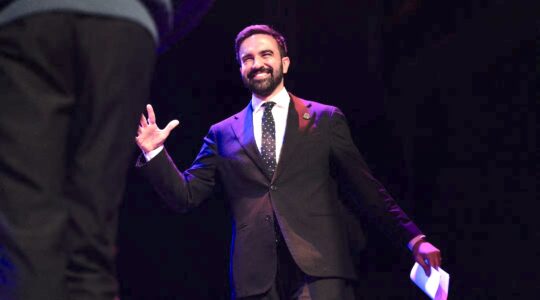Who needs a seder? No, that’s not a loosely translated version of “let all that are hungry, sit down and eat” — the invitation recited early on at the Passover meal. It’s a real question to be considered in light of the fact that while the seder remains the single most widely observed practice among American Jews and their families, with more than 70 percent reporting that they do participate, that percentage has declined more than 15 points over that last two decades.
Unlike many in the Jewish community, I am willing to stay calm and eat matzah, and not jump to any conclusions about what this trend tells us about “the waning identity of Jews in America.” Why? Because it’s difficult to learn anything or make sense of a new reality when running about like Chicken Little or Cassandra, depending upon your mythology preference.
I am also unwilling, in light of this trend, to simply ask how we can do a better job of making the seder sexier, so that more people will start participating, even as that is precisely where we spend so much communal time and treasure. Why? Because getting someone to attend the seder we want them to attend, places our answer ahead of their questions; and that seems especially odd in connection with the seder, which privileges questions more than any other Jewish practice I know, with the exception of learning Torah.
The trend indicates both that plenty of people want to participate in a seder and that increasing numbers of otherwise very proud Jews simply aren’t convinced that they need one. Such moments are genuine opportunities to reconsider the fundamentals of the practice or ideology undergoing transition. Such a reconsideration may or may not get more people to attend a seder, but it will certainly help us all to better understand the larger Jewish collective, which strikes me as especially powerful given that Passover celebrates the birth of the Israelite nation.
So, answer this question: you absolutely, positively, cannot have a seder without…?
You may answer that it’s quite impossible to make a seder without matzah, wine and bitter herbs. The first is a biblical commandment, after all, and the other two are rabbinic requirements, rooted clearly and deeply in the biblical text.
Perhaps you responded that it’s not a seder without questions, at least the “famous four,” and conversation — the more the better. For others, it’s just not a seder without family and friends. And while a seder for one is mentioned in the Talmud, it sounds less than ideal.
Each of these answers speaks to different elements of what seders can be, and each is worthy of serious consideration. But in these polarized times, when more and more Americans — Jews and their families included — report increasing concern about polarization, declining trust even among neighbors and loss of hope about the future, I want to suggest another fundamental of the seder – one that can be learned, practiced and shared, whether one attends such a ritual or not. It’s a seder practice that meets not only the needs of the meal, but a need felt 365 days a year by more and more of us. It begins by revisiting our original question.
What if we cannot have a seder without genuinely different types of people at the table? The tradition of the Four Children — wise, simple, wicked and utterly unknowing — is, after all, as ancient as any of those other things most of us consider indispensable to the seder, being found in the Mekhilta (13:14), the early Rabbinic collection of legally oriented midrashim from the Land of Israel.
Though the Mekhilta never asks, it seems reasonable to wonder why it’s so important to bring four distinct, and not altogether positive, personalities — despite contemporary attempts to be less judgmental in our approach to each — to the center of our seders? Wouldn’t it be easier if they were all wise, or at least a more homogenous group? Real diversity can be a real headache — and that’s before the family starts drinking wine! So, why?
Because welcoming the Four Children, or anybody for that matter, as they are, not as we wish them to be, strengthens us as individuals, as a people and as a nation. Because welcoming the Four Children moves us from bemoaning polarization to doing something about it. Try this practice and see for yourself.
♦ Invite those at your table — seder or otherwise, depending upon your practice — to name someone they define as wise, and to explain why they made that choice.
♦ Ask people to consider something positive we can learn from those we label as wicked, or at least from ideas we deem hostile to our own, and not just the views of the wicked that happen to overlap with our own.
♦ Consider where you wish you could simplify things in your life, and how appreciating complexity sometimes over-complicates issues in our lives. How, in the words of the old Shaker hymn, is it a “gift to be simple”?
♦ Name a topic you really wish people would just stop talking about. Why that one? What might be the benefits, and the costs, of such silence, and to whom would those costs and benefits accrue?
Imagine needing each other — even when each is really “the other,” as the Mekhilta’s Four Children are? And imagine knowing that feeling such a need, and responding to these questions, can be the beginning of being truly free? Not only on Passover, but all year long.
Rabbi Brad Hirschfield is president of Clal-the National Jewish Center for Learning and Leadership.
The New York Jewish Week brings you the stories behind the headlines, keeping you connected to Jewish life in New York. Help sustain the reporting you trust by donating today.




